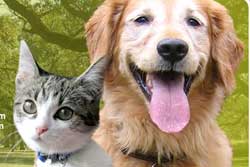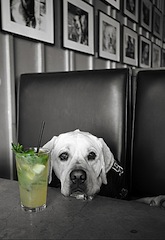Airline Travel Tips
Animals traveling Internationally should have a pet microchip that meets ISO standards 11784/11785. This is a 15 digit non-encrypted microchip that operates at 134.2kHz.The microchip number should appear on all Veterinary and Vaccination Certificates, and be the same number as on those certificates. The microchip should meet the ISO standards or the owner must provide a compatible reader.
Millions of animals travel safely aboard aircraft every year. Airline personnel make every effort to handle these animals with the care they deserve. This pamphlet is designed to assist you in safely transporting your pet. Please keep in mind that each airline has its own guidelines, and it is important to notify an airline about your pet travel plans as soon as possible.
The U.S. Department of Agriculture (USDA) sets and enforces regulations for the transportation of live animals. These regulations apply to you, the shipper, as well as to the airlines. If you decide to transport your dog or cat by air, there are some points to check for compliance with applicable laws, and to assure the safest and most comfortable trip for your pet.
HOW TO SHIP BY AIR
If you cannot accompany your pet, or they are too large to fly in the cabin, dogs and cats typically are transported as cargo or as accompanied baggage. Sometimes these terms create a false impression, but both describe humane means of shipping animals. What is important to know is that you may only transport your pet as accompanied baggage if you are a passenger traveling on the same flight as your pet. If flying cargo, the animal may travel unaccompanied, either through the regular cargo channels or through a especially expedited delivery service that many airlines have developed. Many airline cargo departments have specialists in the movement of animals who can assist you with answers to your questions. They are trained to handle your pet with care and experience.Animals in the cargo systems are transported in the same pressurized holds as those in the checked baggage system. Some airlines allow passengers to carry their pets in the cabin of a plane if the animals are capable of fitting under the passenger's seat. Carry-on pets are not regulated under the Animal Welfare Act. For animals other than dogs or cats, contact the airline for their acceptance policy. You can also send us an email at info@pettravel.com or post an inquiry on our pet travel blog.
QUESTIONS TO CONSIDER WHEN YOUR ANIMAL TRAVELS
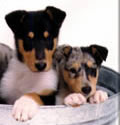 Is your pet old enough?
Is your pet old enough?The USDA says that your animal must be at least eight weeks old and fully weaned before traveling with the airlines.
Which flights are easier on your pet?
Whenever possible, book a direct, nonstop flight and avoid holiday or weekend travel. Consider schedules that minimize temperature extremes. For example, try to avoid travel during excessively hot or cold periods. During periods of excessive cold, an Acclimation Certificate may be required. Morning or evening flights are preferable during the summer. In the cargo system, it is possible to reserve space on a specific flight by paying for either priority or the special expedited delivery service.
 Is your pet healthy?Check with your veterinarian to be sure that your animal is fit to travel. Some species such as pug-nosed dogs (e.g., Boxers, Boston Terriers) - simply do not fly well, because they can have difficulty breathing even under normal conditions. You will need a Airline Veterinary Health Certificate in order to comply with the rules of most airlines, as well as state and federal rules. Your veterinarian will be able to supply this. Most airlines ask that it be issued no more than seven to ten days before departure. Be sure to check with the airline to get the exact amount of time they require before your pet's trip.
Is your pet healthy?Check with your veterinarian to be sure that your animal is fit to travel. Some species such as pug-nosed dogs (e.g., Boxers, Boston Terriers) - simply do not fly well, because they can have difficulty breathing even under normal conditions. You will need a Airline Veterinary Health Certificate in order to comply with the rules of most airlines, as well as state and federal rules. Your veterinarian will be able to supply this. Most airlines ask that it be issued no more than seven to ten days before departure. Be sure to check with the airline to get the exact amount of time they require before your pet's trip.Use of Tranquilizers
Sedation is not advised since the effects of tranquilizers on animals at higher altitudes are unpredictable. The decision to prescribe a tranquilizer for your pet should be made by your veterinarian. If you believe some form of sedation might be helpful, be sure to obtain and follow a veterinarian's advice.
PREPARE IN ADVANCE
Do you have the right crate?You and the airlines must follow IATA regulations on the size of crate for your pet. The crate must be sturdy, properly ventilated and large enough that the animal may freely stand, turn around, and lie down.
The kennel must close securely with a mechanism that requires no special tools to operate. IATA compliant pet cargo crates are available in 7 sizes in the Pet Travel Store. Remember to check with the airline when in doubt, because the USDA assigns full responsibility for accepting the proper kennel to the airline. Crate must be provided with spacers to ensure ventilation openings are not blocked by adjoining kennels or cargo.
Is your animal comfortable in the cargo crate? As far in advance of the trip as possible, let your pet get to know the crate. Veterinarians recommend leaving it open in the house with an old sock or other familiar object inside, so that your pet will spend time in the kennel. Start with just the bottom half of the kennel available to your pet. As they become accustomed to being inside, assemble the top half and leave the door open. It is important for your dog or cat to be as relaxed as possible during the flight and getting your pet accustomed to the crate is crucial in making that happen.
When your pet travels, the kennel should:
- Clearly display your name and address;
- Use arrows or other markings (Live Animal Stickers) indicating the top of the kennel
- Include food and water dishes (both empty) secured inside the kennel and accessible from outside
- Show a food and water schedule and, if any food is necessary, include an ample supply in a bag attached to the outside of the kennel
- Contain no more than one adult dog or cat (some airlines allow two puppies or kittens, younger than six months and under 20lbs. each)
- Contain crate pet pads
- Display labels on top and on at least one side with the words LIVE ANIMALS printed in 1-inch high letters. You can find them in our crate accessory kits.
Have you made advance arrangements for your pet?
At the time you book your trip, call the reservations number of the airline and tell them that you will be traveling with an animal. You cannot book your pet'reservation online. Be sure to reconfirm with the airline 24-48 hours before departure that you will be bringing an animal. If you are shipping your pet as cargo and will be accompanying your pet on the same flight, notice of 24-48 hours should also be given to the airline. This is important, since each airplane can transport only a limited number of animals.
If you cannot accompany your pet, you need to contact the cargo department of the airline to make arrangements for transport
Please note that advance arrangements do not guarantee that your animal will travel on a specific flight. To be as humane as possible, airlines reserve the right to refuse to handle an animal for such reasons as illness or poor kenneling of the animal, or extreme temperatures at origin, transfer or destination airports.
Traveling outside the United States?
 If you are flying to a foreign country or Hawaii, be sure to find out whether there are quarantine or other health requirements at the destination. For example, rules in the United Kingdom are very strict. It is essential to comply with such requirements and sometimes it requires attention as much as 6 months prior to travel. Instructions and forms required for international travel can be found in the Pet Travel Store.
If you are flying to a foreign country or Hawaii, be sure to find out whether there are quarantine or other health requirements at the destination. For example, rules in the United Kingdom are very strict. It is essential to comply with such requirements and sometimes it requires attention as much as 6 months prior to travel. Instructions and forms required for international travel can be found in the Pet Travel Store. READY FOR FLIGHT
Acceptance of Animals.Because they care about animals, no airline will guarantee acceptance of an animal it has not seen. This is to protect both the animal and the airline.
 Since an airline cannot transport an animal that is violent or dangerous, important considerations for acceptance of animals include health and disposition of the animal. A health certificate will help to minimize questions. An airline must also determine whether all paperwork is in order and that the pet crate meets all requirements.
Since an airline cannot transport an animal that is violent or dangerous, important considerations for acceptance of animals include health and disposition of the animal. A health certificate will help to minimize questions. An airline must also determine whether all paperwork is in order and that the pet crate meets all requirements.Food and Water.USDA requires that your pet be offered food and water within four hours before check-in with the airline. Do not overfeed your pet at this time. A full stomach is not good for a traveling pet. When you check in with the airline, you must certify with a signature the time when your pet was last offered food and water. (Do not leave food or water in the dish in the kennel; it will only spill and make travel unpleasant for your animal.)
Arrival and Check-In.
Get to the airport with plenty of time to spare so that there will be no rush. If your animal is traveling as excess baggage or by the special expedited delivery service, check-in will usually be at the passenger terminal. If you are sending your pet through the cargo system, you will need to go to the air freight terminal, which is located in a separate part of the airport. Be sure to check with your airline for the acceptance cutoff time for your flight. Note: by regulation, an animal may be tendered no more than four hours before a flight time (six hours by special arrangement).
Finally, airlines must assure that facilities are able to handle animals at the airports of transfer or final destination. USDA has set clear guidelines on allowable temperature limits for animal-holding areas, which airlines must obey.
INTERLINE TRANSFER OF ANIMALS
When pets travel as accompanied baggage, it is unlikely that one airline can check an animal through from its own system to a final destination served by another airline. Since each airline cares about and is responsible for the animals it accepts, airline agents will need to inspect the animal at the time of check-in. On a trip involving more than one airline, you will need to claim the animal at the connecting stop where you change airlines and check in your pet with the agents at the new airline. Be sure to plan adequate time for this transfer. However, when your pet travels in the cargo system, an interline transfer is not possible unless airlines have a contracted arrangement between each other. this is why it is important to keep your pet on the same airline for the entire route.
However, when your pet travels in the cargo system, an interline transfer is not possible unless airlines have a contracted arrangement between each other. this is why it is important to keep your pet on the same airline for the entire route. HELPFUL TIPS
- It is a good idea to carry a leash with you on a trip so that you may walk your pet before check-in and after arrival. (Do not keep the leash with the animal, either inside or attached to the outside of the kennel.)
- Do not take your pet out of its kennel inside the airport. In keeping with airport regulations and out of courtesy for other passengers, you should let your pet out only after you leave the terminal building.
- You should clearly mark the kennel with your pet's name.
Traveling by Train
United States:
Amtrak does not allow pets onboard its trains with the exception of service animals.
Europe
Pets are welcome on most trains in Europe including France, Germany and Italy.
In most cases, small dogs travel free or at a minimal charge, and large dogs travel at half the 2nd class fare, even if traveling with passengers in 1st class; this charge is payable directly to the conductor.
Often, dogs are required to be kept in a traveling container or must wear a muzzle and a leash. Dogs in a carrier may travel at a minimal cost, depending on the country. A small domestic animal in a carrier can travel free of charge. Seeing Eye Dogs travel free of charge.
Dogs are allowed on trains as long as the other passengers sharing the car/compartment agree to it. A dog is allowed in a sleeper car only if it is fully occupied by the owner (i.e. two passengers with a dog in a double).
Great Britain will allow small pets (2 per person) which must be leashed or carried in a secure pet carrier.
On ScotRail, Scotland's rail system, pets can travel in sleeper cars only subject to a cleaning charge.
No pet or animal, with the exception of registered assistance dogs, may be taken on the Eurostar.
To purchase your travel documents, or for further information you can visit the Rail Europe web site at: http://www.raileurope.com
You should always double check all rules locally.
Thanks pettravel!





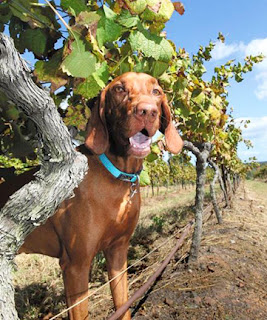



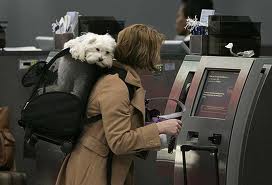




 Every day, we have people asking us for a PET PASSPORT to take their pet into countries all over the world. The term was originally popularized in the European Union (EU) where it became an easy way for pets to travel within the countries of the EU.
Every day, we have people asking us for a PET PASSPORT to take their pet into countries all over the world. The term was originally popularized in the European Union (EU) where it became an easy way for pets to travel within the countries of the EU.







